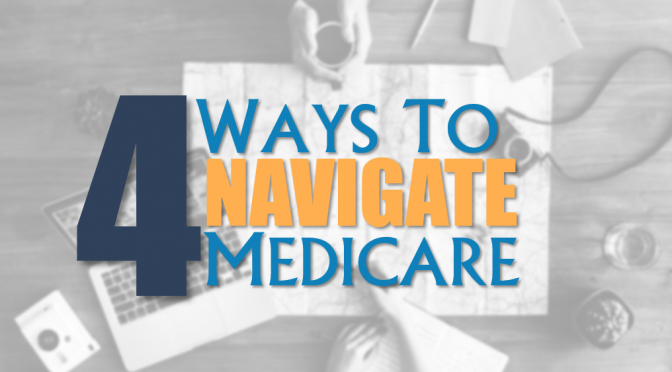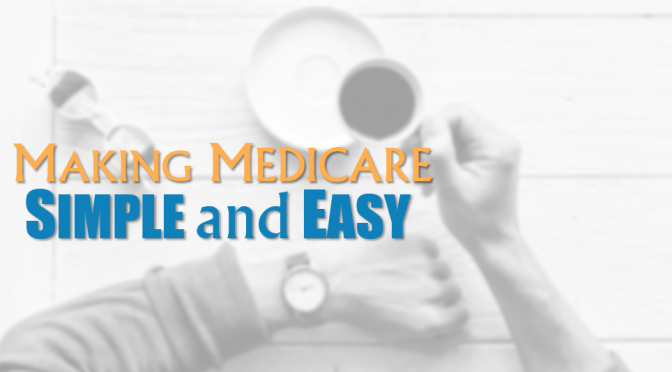The undeniable truth about our Medicare system is that the entire process is daunting. There are so many different terms and phrases; the supplemental plans, the “Advantage” plans, the Part D options. And enough acronyms to drive a sane person completely bonkers.
Add to that the growing number of insurance agents pounding on your door or filling your inbox, the pile of confusing mail awaiting you, and the government “experts” constantly modifying plans and procedures- now, you’re in trouble.
If you take ownership of Medicare knowledge, these pitfalls won’t affect you. In order to be the most educated Medicare buyer, you just have to stop doing these 3 things right now. What happens if you don’t? You waste money and time.
- Stop buying insurance from agents.
Despite any claims otherwise, most insurance sales people tend to play favorites with carriers and products. In many cases the commission rates, incentive trips, and sales leads provided to the agent all contribute to the favoritism. On top of that bias, the Medicare landscape changes indefinitely; carriers in the Medicare realm usually enter the market at a great price, then are followed by substantial increases. Agents aren’t always giving the best advice, and you should really seek an advisor over an agent any day.
- Make sure that the agent you are working with has access to a multitude of carriers (they’re called many names like “non-captive”, “independent” or “non-exclusive”) and definitely avoid “captive” agents, who work exclusively for one carrier.
- Always ask, “What other carriers offer the same plan in my area?” We have literally seen scenarios where one carrier pays close to $300 more commission than another…for the same exact plan! In most cases, carriers who pay less commission to the agent have had more stable rates with smaller increases.
- Don’t take the “easy” way out.
Most agents love to sell Medigap plan “F”, but it’s usually not the best plan for you. The honest truth is that because commission is a percentage of the premium you pay, plan F pays the agent the most. Plus, it’s the only plan that pays both Medicare part A and B deductibles, and all Part B co-insurance, which makes it very attractive. If you are in “open enrollment”, or can qualify for coverage, plan G is almost always the way to go.
Here’s why: Plan G requires you to pay the Part B deductible of $140 per year, but pays everything else the same as plan F. Most plan F premiums are far more than its friend plan G, but only for the convenience factor. Would you pay $300 more per year just to have a $140 deductible paid on the insurance companies’ behalf?
Here’s the other big secret about plan F: It has larger and more frequent rate increases than the other plans. Because Plan F is used for the “Guaranteed Issue” privilege, (for those who have lost coverage from somewhere else), Plan F almost always has more claims due to the absence of medical underwriting. The sicker the pool of people, the more the rates go up. When you apply for a plan G…you’ll know that everyone, except those who just turned 65, had to qualify based on their health. Healthier people=lower rates.
- Stop buying into marketing tactics and sales clichés.
Here’s a short list of some of the most popular sales pitches used to convince a person to enroll, followed by the real interpretation:
- “The customer service is great and they pay claims really fast.” Tell us something we don’t know. Every sneaky agent uses this line, and they usually know darn well it’s out of their control. A good Medigap plan pays everything automatically that Medicare approves, and most clients will NEVER have to work with the carrier except for premium payment changes or a billing address change, etc. What’s more…it’s not as if the Medigap carrier is paying you, they are paying the doctor or the hospital. So whether they pay the claim in 2 days or 2 weeks is completely irrelevant to you. Don’t fall for this one!
“This carrier hasn’t had a rate increase in years!” Bad sign. A carrier who hasn’t taken a rate increase in more than 2 years is probably long overdue for one, and you’ll be along for the ride when it happens. It is far smarter to enroll in a plan that has just recently adjusted its rate, as the chances of you experiencing a large bump in price are far less. Little increases are fine, and necessary based on the claims activity. But huge ones are usually the result of a carrier trying to “buy” the business by maintaining a lower rate until it hits the number of clients it wants; then treating those “lucky” recipients to a whopping increase.
“This company also offers the Part D benefit, so you can have both plans with same carrier.” Run away from this line-giver as fast as you can. It makes no sense to even consider a Medicare supplement plan based on the Part D benefit. Any responsible agent would offer to run a complete prescription drug analysis before recommending a part D. The best one for you is the one that has the least out of pocket costs for that year, and it rarely ends up being the same company as your Medigap policy. You could end up overpaying WILDLY. A reputable, good company would offer a Part D analysis to determine what medicines you actually take, before trying to determine prescription coverage.








